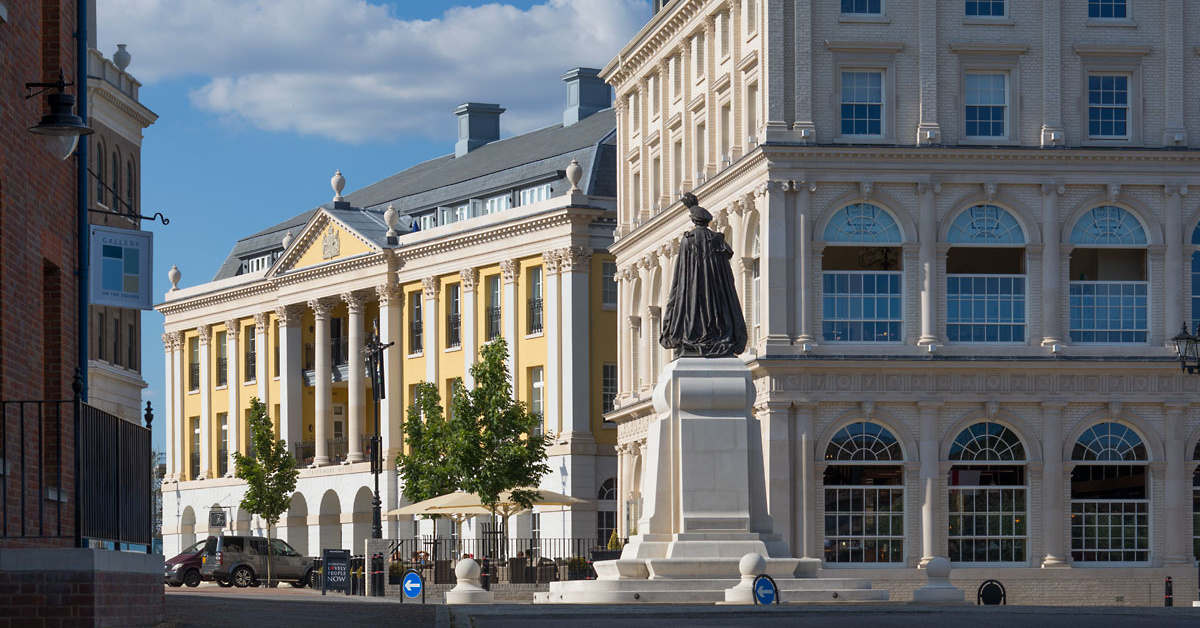The Sutton Estate: Anywhere or Sutton Square?
The Sutton Estate in Chelsea was set up by the William Sutton Housing Trust and named after William Sutton, the founder of the UK’s first door-to-door long distance parcel service. His will bequeathed almost all of his wealth into philanthropic trusts for affordable housing. By 1925 the Trust had developed almost 2,000 homes across six sites. It no longer exists as a separate entity but, as part of a series of mergers, has become part of a large housing association now called Clarion.
In 2015 Affinity Sutton (as it was then called) announced its desire to demolish 13 of the Sutton Estate’s 15 mansion blocks. The plan was to replace the 462 flats with 422 flats, 106 of which would be available for private buyers. The decision led to a high-profile campaign by estate residents joined by some high-profile names from across London. The proposals were widely criticised for presenting London with a triptych of needless destruction: fewer homes; fewer affordable homes and the pointless replacement of Edwardian buildings of real flavour with a bland mush of sub-modernist potage. It seemed indefensible from many angles and the whole affair came to typify the perceived loss of moral focus of some of the larger housing associations.
Against all expectation the campaign succeeded. The local council (Kensington and Chelsea) wisely rejected the planning application. The Planning Inspector upheld this decision and Clarion have now announced their plans to take a more consensual and sensitive approach. Hope is afoot.
As part of the campaign, in 2017 Create Streets worked with local residents, Save Our Sutton (SOS), on a feasibility study for an alternative approach. The aim was to preserve all, or far more, of the beautiful existing buildings whilst being more ambitious for the total number of homes and affordable homes. The main event was a co-design workshop which was attended by over 30 residents and neighbours including ward councillors and the deputy leaders of the local council.
-

Plan of the Sutton Estate, Chelsea. Existing estate buildings shown in mauve and additions shown in blue.
-

Participants drew up a list of six aims which might almost be taken to summarise the loss of community and local control that too many people now feel. These aims were:
-
Save the Sutton Estate;
-
Keep social assets in the area;
-
Use infill and sensitive additions to the existing much-loved estate to generate the money to restore the exteriors and the empty interiors of the Sutton Estate;
-
Re-provide housing and social housing;
-
Keep the strong sense of community linking different generations and strata of society – therefore preserving and nourishing sheltered housing; and
-
Maintain and strengthen the ‘village’ feel.
From these principles, a series of physical priorities emerged very naturally. These included bringing lost housing back into use, restoring pedestrian connectivity through (parts of) the estate and building any extensions or new buildings in a style more sympathetic to the existing and popular Edwardian buildings. These principles helped us to evolve a menu of options and a series of specific proposals ranging from the less to the more radical. One idea core to all of them was to create a newly public Sutton Square at the heart of the estate.
It would be relatively easy to create a green and quiet haven, away from the traffic of Cale Street by demolishing an empty caretaker’s house and creating a new landscaped public square; improving the pedestrian treatment of the street going round; improving access from nearby Ixworth Place and Cale Street; improving the ‘signalling’ of the public nature of the square and of its status via enhanced treatment of the buildings’ end facades; and by adding low railings and gate posts framing the various private and public entrances to the square. We suggested adding a small pavilion to Sutton Square which might echo that at Arnold Circus in Shoreditch.
Also common to all schemes (in various combinations) was inserting new buildings between some blocks so as to turn some of the space between existing blocks into more clearly private communal back gardens and others into more clearly public pedestrian streets whilst creating new homes. More ambitious options also suggested arched entrances between buildings and additional storeys to the buildings facing Ixworth Place.
More work is obviously required but maybe with the change in Clarion’s strategy some of this is now possible? One thing is certain, the Sutton Estate is already a special place and has great potential to be even better. It deserves love and care, not to be replaced with ‘nowhereville’ blocks with fewer homes and fewer affordable homes. There is scope to create some lovely public and private spaces and to increase housing alongside the Edwardian mansion blocks. This would be better for residents, for the neighbourhood and, ultimately, for Clarion themselves and their public reputation.
Sutton Square not anywhere.
Team: Create Streets, Francis Terry and Associates, Gallarati Associates, calfordseaden (John Spence, Chris Rainsford and Mariana Fernandez Davila).
You might also like...
-

Queen Mother Square, Poundbury, Dorset
-

264-267 Tottenham Court Road, London
-

Mount Pleasant: Fortress or Circus?
-

West Hampstead: What is a Mansion Block?
-

Little Oval: Cricket and Gasworks
-

Northampton: Narrow Fronts, Many Doors
-

Wimbledon: What is It to Be Premier?
-

Euston Road: Can an Arch a Boulevard Make?







